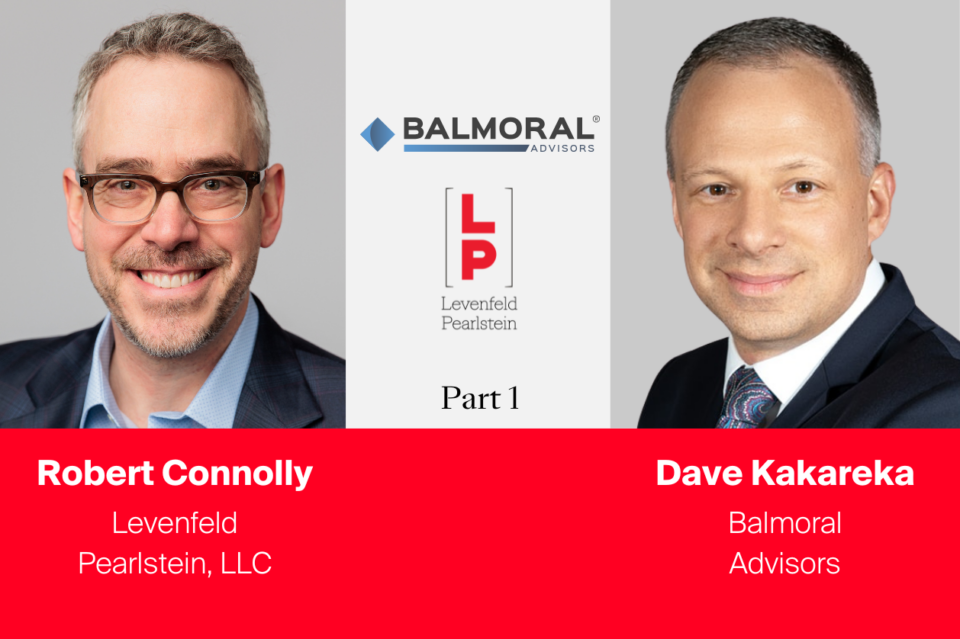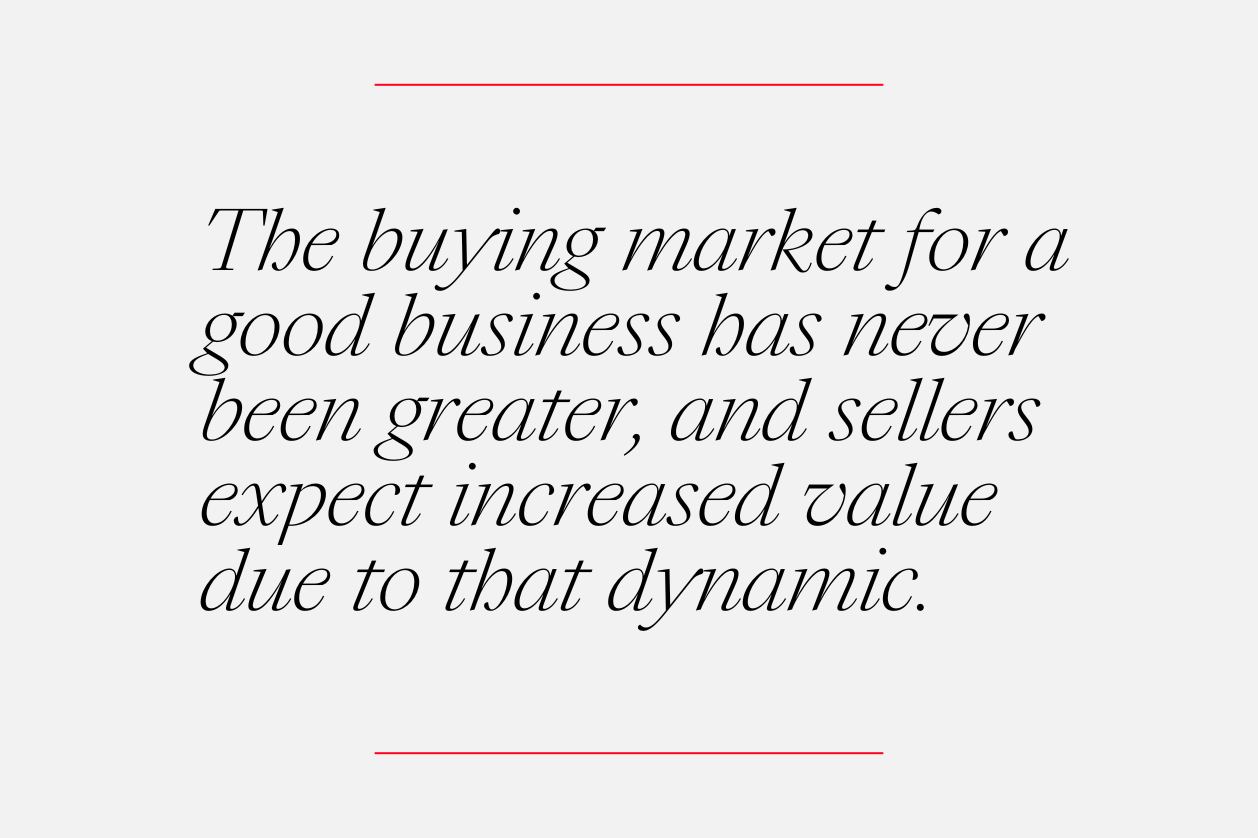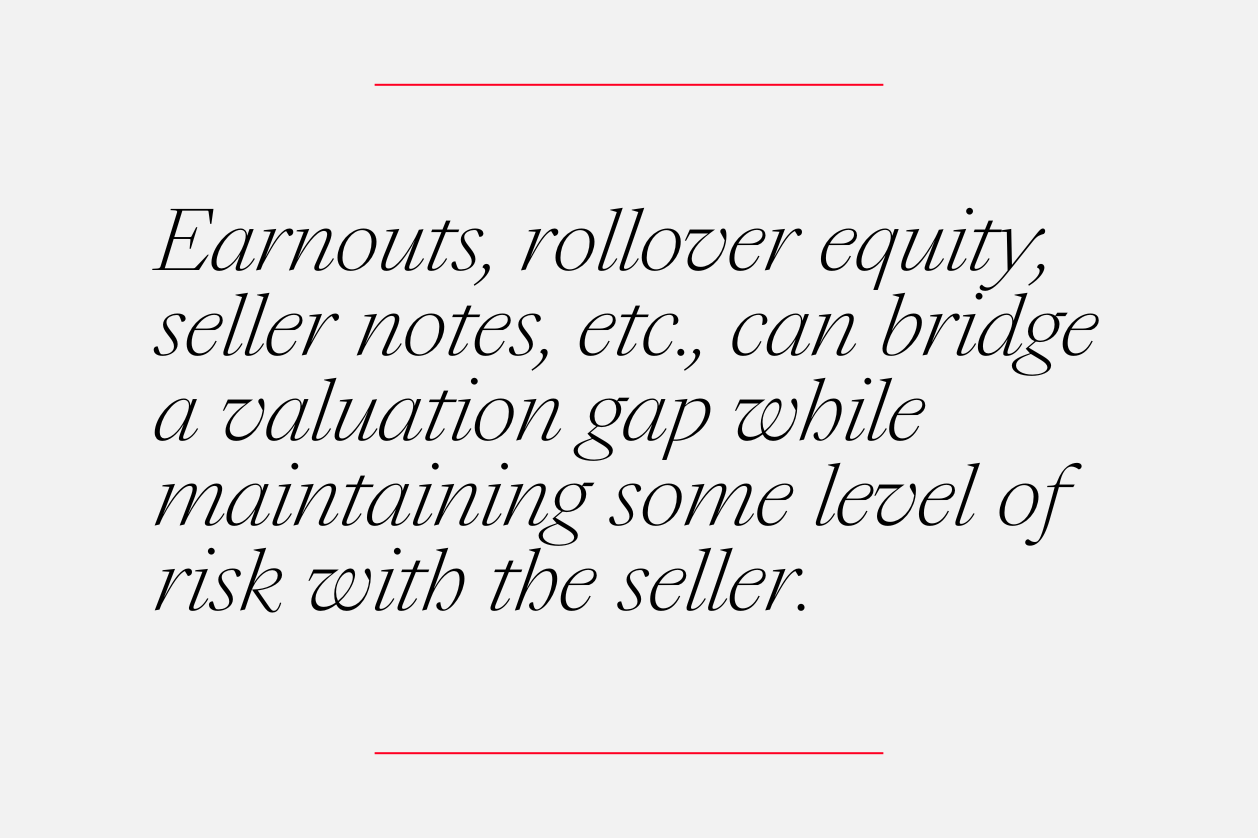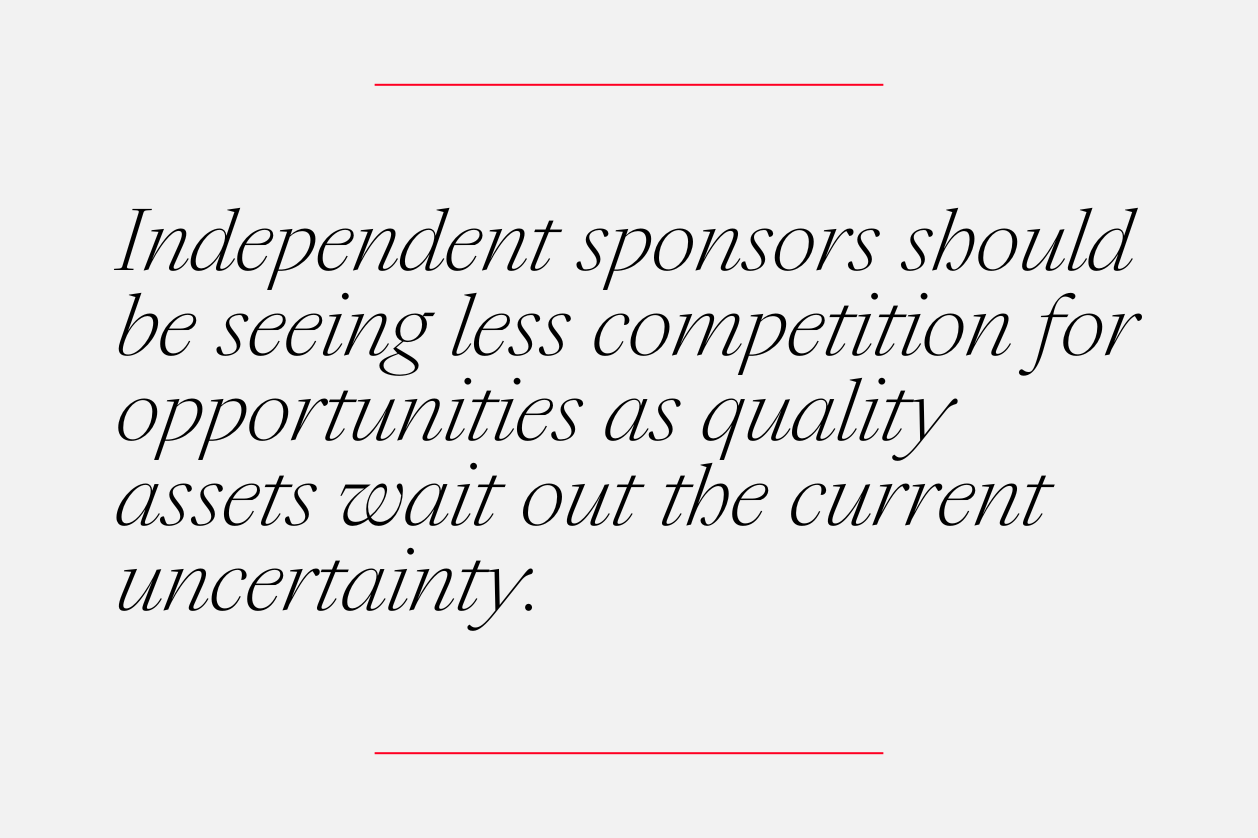M&A Insights Series – Valuation Expectations and Industry Trends: A Conversation with Dave Kakareka of Balmoral Advisors (Part 1)

To help businesses, owners, investors, and deal professionals better understand the evolving M&A market, Robert Connolly – a partner in LP’s Corporate Practice Group and leader of LP’s Independent Sponsor and Private Equity teams – shares a series of conversations with M&A experts.
Below is his conversation with Dave Kakareka, Managing Director at Balmoral Advisors, an independent investment banking firm. Dave has over 15 years of experience working with clients to develop and implement mergers and acquisitions transaction strategies and capital raise mandates. In this, the first of a two-part Q&A, Dave discusses the middle market deal landscape, valuation expectations, and industry trends. In part two, he explains the impact of tariffs on deal activity, analyzes how strategics and private equity approach deals differently, and offers advice to potential sellers and buyers.
The responses below have been edited slightly for brevity and clarity.
How would you describe the current state of the middle market?
Generally, the middle market has not recovered to normal levels. Although everybody has their definition of “normal.” Private equity and strategic buyers remain active, but their focus has shifted. For private equity, if good platform opportunities are not matching a firm’s directives and parameters, the focus has shifted to add-on acquisitions to their existing portfolio. The trend has driven deal volume towards the smaller end of the middle market (i.e., $10-50 million in total enterprise value). There are recently published results from GF Data outlining the volume of add-ons vs. platform investment.
Are there any industries showing outsized growth or resilience?
Plenty of businesses and industries continue to grow, even with some additional uncertainties over the last 2-3 months. Uncertainties regarding the election, the general direction of interest rates, and inflation have reduced. However, those issues have been replaced with new uncertainties, with tariffs being at the top of the list.
The current environment may push additional M&A interest towards service and contract-based businesses. They are generally asset-lite and less dependent on foreign suppliers for their operations.
Are you seeing any shifts in how buyers and sellers approach valuation expectations?

There may always be a gap between buyer and seller expectations. Sellers have become more educated regarding the amount of capital in the market and their ultimate value to these capital providers. The buying market for a good business has never been greater, and sellers expect increased value due to that dynamic.
Buyers see risks on the horizon and remain conservative with regard to leverage and overpaying for companies in this market. Given the shift towards add-on (smaller) acquisitions, mid-market companies are getting more attention and higher multiples. Despite all of the credit available, valuations haven’t risen dramatically as a result.
How is capital availability and financing conditions?
Capital is available in all pockets of the market. Depending on the investment directive, private investments (e.g., credit, PE, VC) are more popular than ever. As mentioned earlier, matching everyone’s definition of a quality opportunity has been challenging, especially when adding current valuation expectations.
Transactions continue to occur and will continue in any market. Whether it’s private equity, strategic buyers, or family offices, capital deployment will increase only when buyers are incentivized to be more aggressive.
Are you seeing more creative financing solutions like seller notes or minority equity investments?

In the middle market, these solutions will always be an option to bridge any valuation gap between buyers and sellers. As mentioned, private equity will be hesitant to over-leverage a new platform investment in the current environment. Creativity comes into play when there is a strong interest in winning the opportunity. Earnouts, rollover equity, seller notes, etc., can bridge a valuation gap while maintaining some level of risk with the seller.
What trends are you seeing with private equity activity in the middle market?
There remains a focus on current portfolios and add-on activity. New platform investments are still well below typical levels and values. Continuing to invest in a known opportunity can be deemed as less risky while continuing to put capital to work. A small add-on acquisition can expand service coverage, build up existing market share, or add a product or service line. This was the focus in 2024, which showed in the number of add-ons versus platforms.
Another buying trend we are seeing is a shift to the service sector. Particularly with the recent tariff uncertainty, asset-light, domestic-based services businesses have become more attractive targets. Traditional industries such as oil and gas, telecommunications, and industrials have drawn interest in their service counterparts (e.g., leak/gas detection, cell tower maintenance, commercial cleaning)
Are independent sponsors playing a more significant role?

Independent sponsors will always play a role in the market; however, it’s hard to tell if they are playing a larger role in today’s market. Typically, they have a bit more flexibility when it comes to deal sticking points (e.g., concentration) due to the lack of fund mandates. In this market, independent sponsors should be seeing less competition for opportunities as quality assets wait out the current uncertainty.
Can you talk about sector-specific trends?
The traditionally recession-proof sectors (e.g., food and beverage) are attractive to capital given the length of time since the last recession. Sectors with contract- or recurring-based businesses, such as IT/MSP (managed service providers), facility maintenance, landscaping/lawn care (especially within the commercial and industrial space) – are particularly attractive given recent headlines.
For more information on Balmoral Advisors, visit their website. For more information on Dave Kakareka, view his bio.
Interested in participating in a future interview series? Please contact Robert Connolly at rconnolly@lplegal.com.
To read other articles in this series, please see here: Insights | LP (lplegal.com)